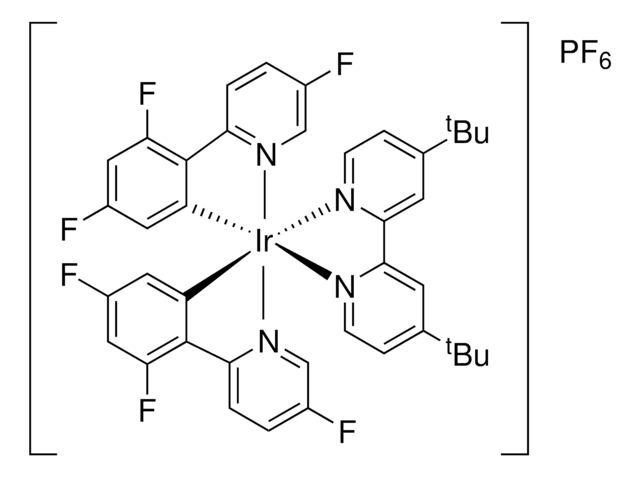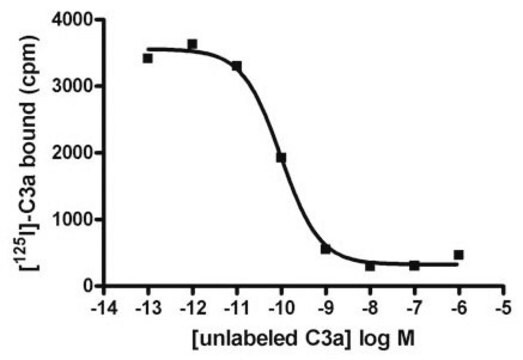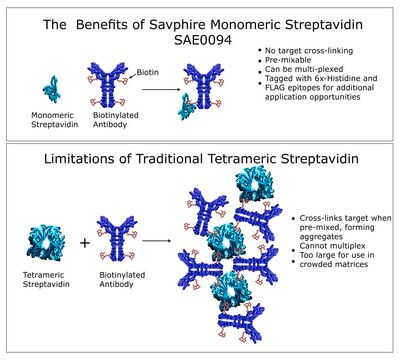AB4130
Przeciwciało anty-FOXO1
Chemicon®, from rabbit
Synonim(y):
Forkhead Box Protein O1, FKHR
About This Item
Polecane produkty
pochodzenie biologiczne
rabbit
Poziom jakości
forma przeciwciała
affinity purified immunoglobulin
rodzaj przeciwciała
primary antibodies
klon
polyclonal
oczyszczone przez
affinity chromatography
reaktywność gatunkowa
rat, mouse, human
producent / nazwa handlowa
Chemicon®
metody
immunocytochemistry: suitable
numer dostępu NCBI
numer dostępu UniProt
Warunki transportu
wet ice
docelowa modyfikacja potranslacyjna
unmodified
informacje o genach
human ... FOXO1(2308)
Specyficzność
Immunogen
Zastosowanie
Optymalne rozcieńczenia muszą być określone przez użytkownika.
Epigenetics & Nuclear Function
Transcription Factors
Powiązanie
Postać fizyczna
Przechowywanie i stabilność
Uwodnione roztwory przeciwciał mogą być przechowywane w stanie nierozcieńczonym w temperaturze 2-8°C przez 2 miesiące bez znaczącej utraty aktywności. Należy pamiętać, że roztwór nie jest sterylny, dlatego należy zachować ostrożność, jeśli produkt jest przechowywany w temperaturze 2-8°C.
Do przechowywania w temperaturze -20°C można dodać taką samą objętość glicerolu, jednak zaleca się stosowanie glicerolu klasy ACS lub wyższej, ponieważ może wystąpić znaczna utrata aktywności, jeśli użyty glicerol nie jest wysokiej jakości.
Do zamrożenia zaleca się dalsze rozcieńczenie uwodnionego roztworu przeciwciał w stosunku 1:1 2% roztworem BSA (frakcja V, najwyższej dostępnej jakości) sporządzonym z buforem do nawadniania. Otrzymany 1% roztwór BSA/przeciwciało można podzielić na porcje i przechowywać w stanie zamrożonym w temperaturze -70°C przez okres do 6 miesięcy. Unikać powtarzających się cykli zamrażania/rozmrażania.
PRZYGOTOWANIE I UŻYCIE:
Aby odtworzyć przeciwciało, odwiruj fiolkę z przeciwciałem z umiarkowaną prędkością (5000 obr./min) przez 5 minut w celu usunięcia wytrąconego produktu przeciwciała. Ostrożnie usunąć roztwór buforowy siarczanu amonu/PBS i wyrzucić. Nie jest konieczne usunięcie całego roztworu siarczanu amonu/PBS: 10 μl pozostałego roztworu siarczanu amonu nie wpłynie na ponowne zawieszenie przeciwciała. Nie dopuścić do wyschnięcia osadu białka, ponieważ może dojść do poważnej utraty reaktywności przeciwciała.
Ponownie zawiesić osad przeciwciała w dowolnym odpowiednim buforze biologicznym, standardowym PBS lub TBS (pH 7,3-7,5). Wymagane objętości nie są krytyczne, ale sugeruje się, aby końcowe stężenie przeciwciał wynosiło od 0,1 mg/ml do 1,0 mg/ml. Na przykład, aby osiągnąć stężenie 1 mg/ml z 50 μg wytrąconego przeciwciała, potrzebna ilość buforu wynosiłaby 50 μl.
Ostrożnie dodać płynny bufor do osadu. NIE WIROWAĆ. Wymieszać przez delikatne mieszanie szeroką końcówką pipety lub delikatne stukanie palcem. Przed użyciem pozostawić wytrącone przeciwciało do uwodnienia na 1 godzinę w temperaturze 4-25°C. Małe cząstki wytrąconego przeciwciała, które nie ulegają ponownemu zawieszeniu, są normalne. Fiolki są przepełnione, aby zrekompensować wszelkie straty.
Informacje prawne
Oświadczenie o zrzeczeniu się odpowiedzialności
Nie możesz znaleźć właściwego produktu?
Wypróbuj nasz Narzędzie selektora produktów.
Kod klasy składowania
12 - Non Combustible Liquids
Klasa zagrożenia wodnego (WGK)
WGK 2
Temperatura zapłonu (°F)
Not applicable
Temperatura zapłonu (°C)
Not applicable
Wykazy regulacyjne
Wykazy regulacyjne dotyczą głównie produktów chemicznych. Można w nich podawać ograniczoną liczbę informacji na temat produktów niechemicznych. Brak wpisu oznacza, że żaden ze składników nie znajduje się w wykazie. Użytkownik odpowiada za zagwarantowanie bezpiecznego i zgodnego z prawem stosowania produktu.
EU REACH Annex XVII (Restriction List)
Certyfikaty analizy (CoA)
Poszukaj Certyfikaty analizy (CoA), wpisując numer partii/serii produktów. Numery serii i partii można znaleźć na etykiecie produktu po słowach „seria” lub „partia”.
Masz już ten produkt?
Dokumenty związane z niedawno zakupionymi produktami zostały zamieszczone w Bibliotece dokumentów.
Nasz zespół naukowców ma doświadczenie we wszystkich obszarach badań, w tym w naukach przyrodniczych, materiałoznawstwie, syntezie chemicznej, chromatografii, analityce i wielu innych dziedzinach.
Skontaktuj się z zespołem ds. pomocy technicznej![Ir[dFFppy]2-(4,4′-dCF3bpy)PF6 ≥95%](/deepweb/assets/sigmaaldrich/product/structures/816/772/b116c17c-e6b2-4c95-be64-45a5a851d823/640/b116c17c-e6b2-4c95-be64-45a5a851d823.png)
![(Ir[dF(CF3)ppy]2(dtbpy))PF6](/deepweb/assets/sigmaaldrich/product/structures/982/913/02dd8ddd-6deb-40a0-ab9b-07b18f1abb09/640/02dd8ddd-6deb-40a0-ab9b-07b18f1abb09.png)







